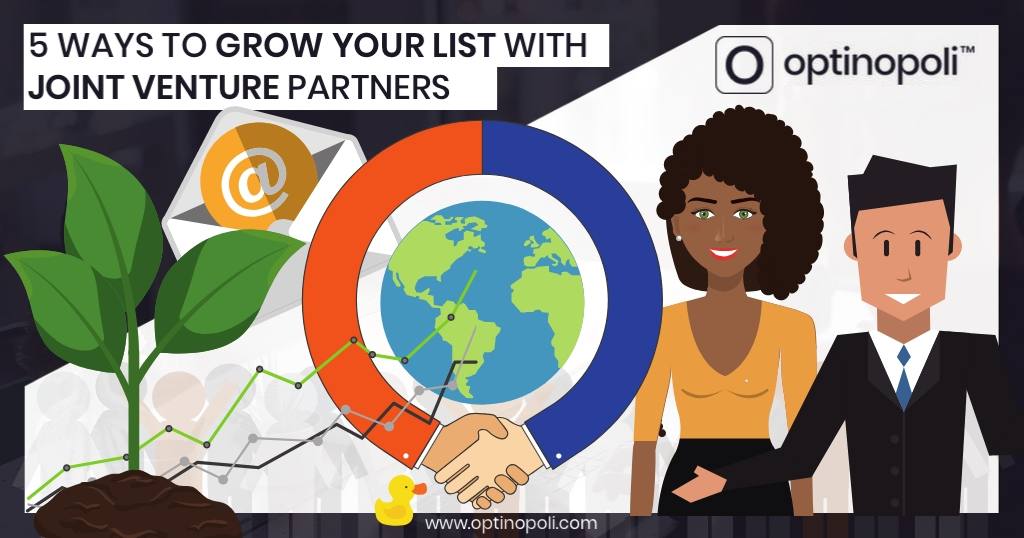
5 Ways to Grow Your List with Joint Venture Partnerships
Want to know one of the fastest, most cost effective ways to grow your list by potentially tens of thousands of new subscribers within a short space of time?
Joint venture partnerships.
This post provides a quick refresher on how joint ventures work, and then gives you 5 different powerful ways in which to use them to grow your list.
5 ways to grow your list with #jointventure partnerships #jv #emailmarketing via @optinopoliClick To Tweet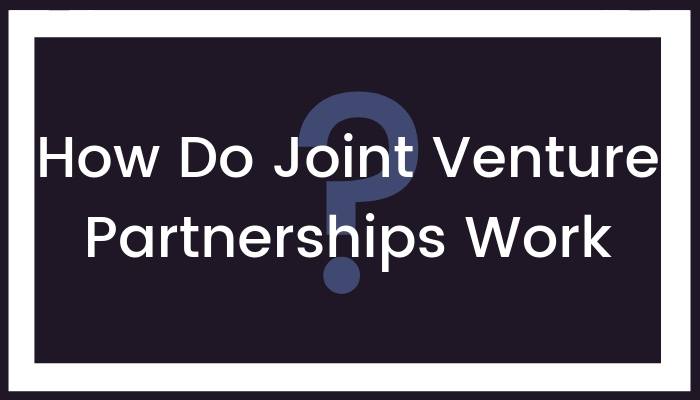
Here's how joint ventures (often referred to as JVs) work:
- Your product, service or some other kind of resource is of interest and value to another business’s audience.
- That business refers their audience to you, resulting in multiple new sign ups to your list (and often sales too).
It can be very quick, giving you a sudden spike in traffic and list subscribers, such as via a mailing to their list or a post on social media. And then, just as quickly, it's all over.
Or the effects might be more longer term, with a steady stream of referrals over weeks, months, even years. This could be the result of a review blog post or video, or simply a link to you from a popular post.
Generally speaking, an effective JV means it's a win-win for both sides.
Ideally, you'll want your partner to gain as much if not more than you do. That keeps them in the game, and:
- Sets you up for similar deals in future—joint ventures are rarely a one-trick pony. They can result in lifelong friendships.
- Attracts other potential partners to you through referrals—existing partners are often only too willing to refer you to others in their network, particularly when they've had a positive experience themselves.
How do your JV partners win?
They might be delivering a flood of new subscribers to you, but they only do so because it's in their interests too. At the same time as helping you, the partnership helps build their business too.
How?
Here are some ways your partner can win—often more than one of these will apply:
Building authority
By recommending a useful resource to their audience, whether that's an email list or followers on social media, they build their own authority.
It helps them become someone to be listened to, and builds engagement, whether that's email opens or social likes and shares.
It builds the value of their audience as an asset.
If they're recommending say a new service or product, there might be some financial compensation involved too (see next), but they might want a special deal just for their audience.
This is all to do with their relationship with—and becoming a trusted resource for—their audience.
Financial compensation
Often JVs are based on the premise of giving your partner a percentage of referred sales.
One of the most common arrangements in the digital world is a 50/50 split on revenue.
Although this looks like an even split at first glance, it means your partner gets more from each sale than you do, at least initially. Out of your 50% comes the costs of fulfilment and customer support.
But then longer term, you have a valuable customer on your list who you can sell more products and services to over time, often with no further compensation to the original referring partner.
Your #JV partner wins by building authority, financial compensation, and/or reciprocation #emaillist via @optinopoliClick To TweetIt's for this reason that some JVs are set up with a 100% of the initial sales revenue going to the referring partner. The intention of the seller is not to profit initially but to build a list of customers who they can then sell to repeatedly over time on the strength of the original referral.
A buyer is a buyer is a buyer.
Dan Kennedy
Reciprocation
You scratch my back and I'll scratch yours.
JVs can be organized on the basis of reciprocation alone. I'll recommend you to my audience, and then you recommend me to yours.
It's simple, but effective.
It works best when you both have similarly sized audiences. You might serve the same market and have similar but not directly competing products and services.
So it makes sense to:
- Share the audiences you've built with each other.
- Support mutual growth by recommending each other's products, services and other resources to your respective audiences.
5 Ways Joint Ventures Can Grow Your List
So how do joint ventures actually grow your list?
Here are 5 different ways that can work.
5 ways joint ventures can grow your #EmailList #JVs #EmailMarketingTips via @optinopoliClick To Tweet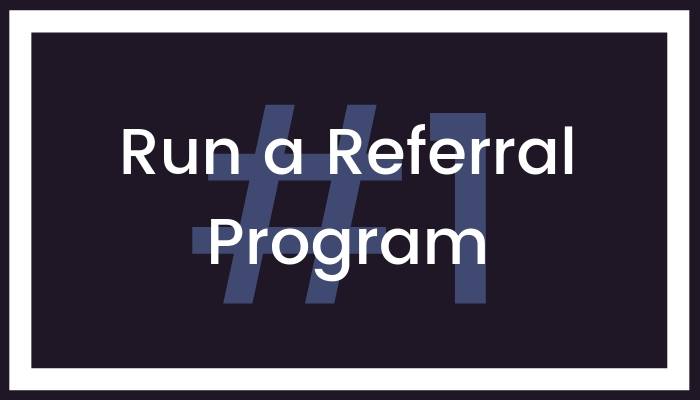
One way to encourage other businesses to refer their audience to you is through a referral or affiliate program.
This generally means they receive a percentage of sales they refer as a commission.
Referrals are usually tracked through cookies (a small text file on the computer of those who click the affiliate link). On purchase, the cookie is consulted to determine the referrer, in order to credit them with their commission.
Even for those who don't buy immediately, you can add as many as possible to your email list. By building the relationship with them, you can convert these prospects over time.
In fact, it can be more profitable to use referral links for lead generation rather than to try to get the immediate sale. Doing so results in far more leads on your list than you would do otherwise.
Plus, the referral from someone they already trust increases the chances of converting these leads into customers.
Of course, you have to weigh this against the desire of JV partners to see results, in other words, commissions awarded to them.
But presuming you have a strong offer along with an effective sales conversion follow-up system, this shouldn't create any problems.
To use a referral program for lead generation, the referral link needs to direct to a signup offer of some kind. This could be one of the following:
- A free trial for a product or service.
- An evergreen webinar (see #3 below).
- Access to a Lead Magnet such as a video or downloadable report. (Recommended: How to Create a Top Converting Lead Magnet That Sells)
How to run a referral program
Referral programs require the use of software. Here are some of the various options available:
- Create your own referral program via bespoke coding on your website.
- Use a third-party affiliate network, such as:
- Install some third-party software on your site, such as:
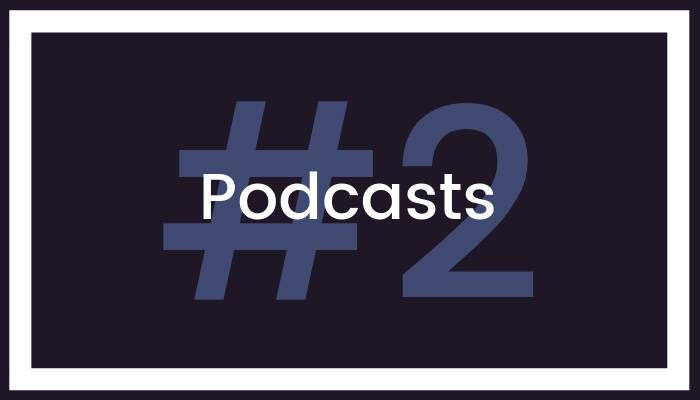
Ever thought of running your own podcast, interviewing other business owners?
Or being interviewed in podcasts yourself?
Podcasts are in effect a powerful form of joint venture. As you'll see, whether interviewer or interviewee, you both win.
Even better, it starts a relationship that can become even more valuable over time. In fact, because podcasting is so valuable as a catalyst for business (and email list) growth, you'll find this is the biggest section in this post.
#Podcasting is a catalyst for #BusinessGrowth, including the growth of your #EmailList via @optinopoliClick To TweetThe growth of podcasts
The popularity of podcasting is growing:
- Between 2017 and 2018, the number of Americans who listened to podcasts on a weekly basis grew by 14% to 48 million people—that's nearly two and half times the numbers watching NFL Sunday Night Football, one of the highest-rated TV programs in the US (Jay Baer).
- 11% of adults in the UK use podcasts (closer to 20% for those aged between 15 and 24), which has grown by nearly 60% in the space of just 5 years (Ofcom).
In addition, podcast listeners are loyal, affluent and educated:
- Nearly half of listeners have a household income over $75k.
- Nearly a third have a 4-year college degree.
Podcasts are not only growing in popularity, but also attract educated buyers—in other words, the exact type of person you want on your email list.
This is reflected in the significant growth (and forecast growth) of podcast advertising revenue, from an estimated $106 million in 2015 to more than six-times that amount in 2019, nearly $700 million in 2019.
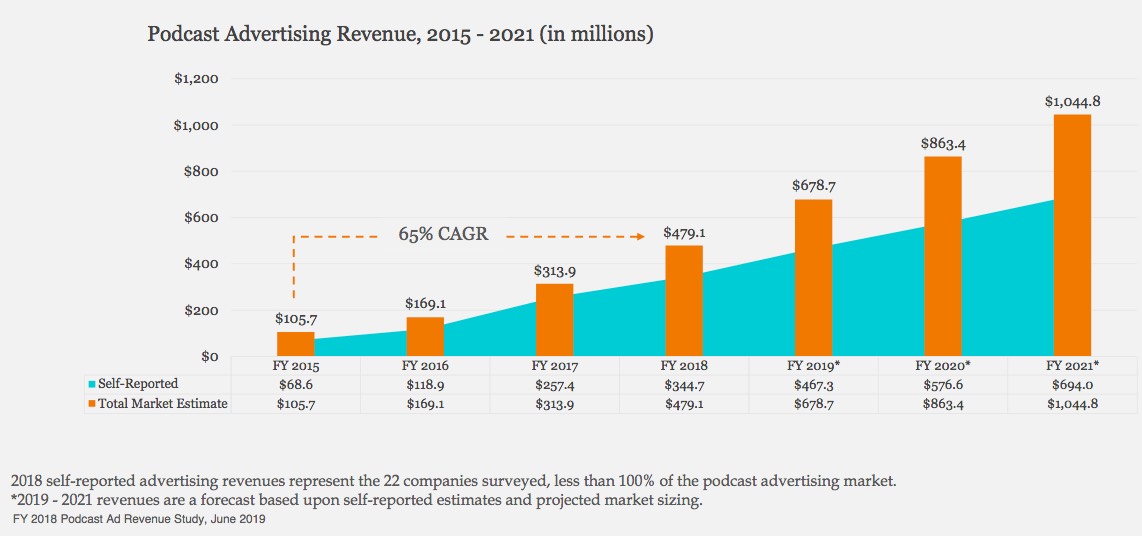
Running your own podcast
When you run your own podcast, you not only increase your visibility and authority, it also gives you a powerful option to joint venture with other businesses and people who may often have more influence and visibility.
How does this work?
Quite simply:
- Invite another business owner (including influencers) with useful information to share with your audience onto your podcast.
- Have a conversation with them!
Here's how you both win:
- You get new content for your audience, growing your visibility, and often building authority too by the power of association.
- They get useful and often long-term exposure for their own business.
Here's how it grows your list...
By creating your podcast episode, you give your interviewee new content they can share that builds their own credibility, trust and influence.
That means the vast majority will refer their own audience to the episode, potentially significantly larger than your own. By publishing the episode via a blog post, you give them a ready link to share.
Grow your #EmailList by interviewing business owners on a #podcast who'll then share with their own audience via @optinopoliClick To TweetHere are some different ways you can use this opportunity to grow your list:
- Provide opt-in opportunities for visitors. You might incorporate one or more of the following, ideally offering a content upgrade to maximize conversions:
- A Smartbar.
- A popup (perhaps on exit or after they've been on the page for so long).
- An embedded widget.
- Offer the same content upgrade within the podcast episode itself. The simplest way to do this is via a Landing Mat.
- Use remarketing to target people after they've visited the post, and haven't yet joined your list, with the same content upgrade offer, again via a Landing Mat. (Recommended: A Three-Step System for Exponential Lead Growth)
- Make it clear how visitors can subscribe to your podcast so you grow your audience—in each episode, provide opportunities for listeners to join your email list.

What if you don't yet have a podcast audience?
Don't worry if you're only just starting out and don't yet have much of an audience. Just be honest and upfront about this.
You'll likely find it's not as big an issue as you might imagine. You'll find people still willing to be interviewed, because they value the long-term exposure anyway.
Increase the perceived value on offer by letting them know you:
- Publish the audio along with a transcript on your blog, and link back to their website.
- Publicize the episode on social media and via your email list.
Some may even be grateful if you're new to podcasting. They may be too—it gives them a chance to hone their interviewee skills without worrying about a huge audience.
Being interviewed on other podcasts
If you don't want to run your own podcast, you can still take advantage of podcasting to grow your list by making yourself available to be interviewed on other people's shows.
Grow your #EmailList by appearing as a guest on #podcasts and giving a #leadgen #CTA via @optinopoliClick To TweetThree steps to becoming a podcast interviewee
The following three steps are based on tips from podcast host and publisher, Tyler Basu, about how to find and pitch to suitable podcast hosts.
1. Search for top podcasts in your niche
The best place to start is iTunes, with Apple recently confirming there are over 550,000 podcasts.
Go to the podcast section of the iTunes store and search for podcasts by:
- Category
- Sub-category
- Keyword
- The names of those who have appeared on podcasts.
You can also simply search on Google for relevant podcasts.
2. Research each podcast you find
Before contacting the host, do your research and make sure it's both a good fit for your business, and that they accept interviewees:
- Check the podcast's description.
- Listen to some episodes (is it still active?)
- Check out their website, blog and social media presence.
Presuming it's otherwise a good fit, listen out for ways you can best contact the host.
The aim is to narrow down the initial broad list of potential podcasts into a shortlist of podcast hosts to pitch.
3. Pitch the podcast host
While email is often preferred, you can help your proposal stand out from the pack by starting the relationship with them on social media first. Try contacting them on social media, asking for permission to send them a proposal via email.
When you do email them, make sure you're not sending out a blanket pitch. Individualize it for them, making it clear you've done your research and are approaching it professionally.
When pitching to #podcast hosts, avoid blanket pitches. Do your research and approach them individually. via @optinopoliClick To TweetRemember, like you, podcast hosts are busy people. It helps to make it as easy as possible for them by making the initial email brief.
If you're completely unknown to them, long pitch emails may well get short shrift.
Instead, highlight the main points of value for them and their audience, and ask if it would be okay for you to send further information for them to consider.
If you've done previous interviews, mention them. This helps provide social proof, which reduces risk for them.
If you have any mutual connections, mention them too. Or even better, ask if the mutual connection is able to make an introduction.
How to use the podcast to grow your list
The primary interest of the podcast host is to provide value to their audience. Let them guide the conversation, and provide as much value as you can during the interview without pitching their audience.
From your initial research, you should have a good idea about how their show is structured.
The host may well mention your website as part of an introduction at the start of the episode, and will generally provide an opportunity for a quick CTA at the end.
Use this opportunity to again add value to their audience, while at the same time growing your list. One of the best ways to do this is to offer a valuable free gift or resource that you'll send to them by email, and give them a link to go to. Don't make it a sales pitch. Instead focus on lead generation.
(TIP: Make the link a straight domain that redirects to a lead gen page—it's a lot easier to remember and type in when listening, and will increase your response).
The biggest benefit of podcasting
Whether hosting a podcast or being interviewed on one, it's a valuable form of joint venture in its own right.
However, the biggest benefit for list building and for your business in general lies in the long-term relationship you can establish as a result.
This can mean introductions to other podcast hosts and influencers, referrals to your business, speaking and networking opportunities, future joint ventures and more.
The initial interview will have given you a valuable connection you can now build on. So help the relationship to grow by keeping in touch with them, and being as helpful as you can in supporting them.
#Podcasting gives you valuable introductions to long-term #JV partners via @optinopoliClick To Tweet
While covered in more depth via a separate post, webinars run as a joint venture between you and another business can literally add hundreds if not thousands of new subscribers to your list in just a few hours.
For example, you might have some valuable information you can share via a webinar with the audience of another business.
In terms of sales, the webinar will usually be constructed in a way that shows the benefits of doing a particular activity, and then sells them on a way to make that easier via a suitable product or service.
The incentive for the other business to run that webinar to their audience, is that they will generally earn a percentage of the sales made.
However, in terms of growing your list, the long term value for you is often greater than the initial sales.
The long-term value of growing your #emaillist through #webinars can be greater than the initial sales via @optinopoliClick To TweetHere's how that works:
- The other business refer their audience to your webinar's registration page.
- Those registering for the webinar will also of course be joining your list, enabling you to develop your relationship and sell more to more of them over time.
See the following recommended post for more information about using webinars for lead gen, including the various software options available for running webinars.
Recommended: Easy Guide to Using Webinars for Lead Generation
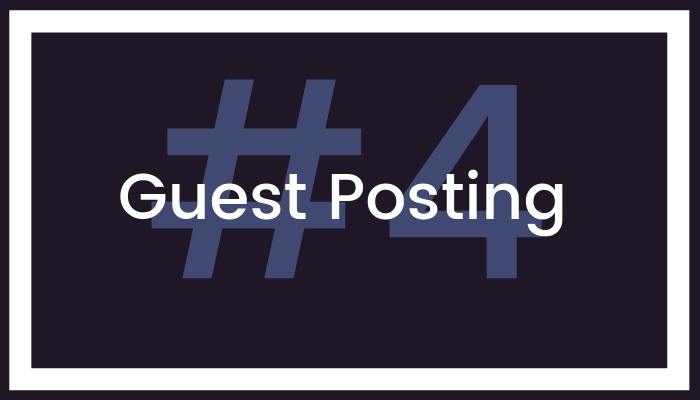
Guest posting involves you providing useful content to another blog which they then publish, usually in return for a link back to your site via a bio section, as well as sometimes within the post itself.
Here's how you both win:
- The blog you're guest posting on gains through the traffic they attract via your content, which you can then monetize in different ways.
- You gain through the link(s) from the guest post back to your website, which you can then use for list growth as we'll see next.
You'll also find out how accepting guest posts on your own blog can also be a powerful driver of list growth.
How do links from guest posts help grow your list?
This can work in different ways when guest posting on other blogs.
First, you can have the link head straight to a lead gen page that offers a content upgrade related to the guest post, encouraging readers to obtain a free and valuable resource.
Second, by linking back to your website, it helps with SEO, building your organic traffic over time. You can then convert these visitors into leads on your email list.
Third, and this gets a bit more advanced, you can use remarketing to target advertising at those who click through, linking the advertising to a lead gen page such as a Landing Mat. You can use this in conjunction with the other two ways above.
While each guest post may only result in a trickle of new subscribers for your email list on their own, this starts to build up the more guest posts you publish.
#GuestPosting leads to a constant supply of new #emaillist subscribers via @optinopoliClick To TweetAlso, remember that guest posts are likely to continue providing value for months and years to come. A few new subscribers a month can mean dozens of new subscribers a year, and potentially hundreds over the course of a few years.
How does accepting guest posts on your blog grow your list?
By accepting guest posts, you grow the content footprint of your website, attracting organic traffic from the search engines.
This doesn't just mean search traffic to the guest post itself. It also builds the authority of your site overall, growing the traffic to your website as a whole.
By encouraging contributors to share their post on social media, you gain positive social signals for your website, boosting SEO (as well as providing some social traffic).
You then convert this traffic into new subscribers.
However, for this to work to best effect, you should bear in mind the following:
- Ensure the content you accept as a guest post is not duplicated elsewhere at the time of publication, and for several weeks afterwards so that search engines recognize your site as the original source. Otherwise it serves little useful benefit for your own website.
- Have quality guidelines in place for contributors and don't accept anything that compromises them. Make it clear you reserve the right to edit the content as required. You don't want your website to become a haven for low quality content.
To maximize the SEO benefits, edit the post prior to publication so that it links to other useful resources on your website or blog.
Accepting #GuestPosts on your blog also attracts more #EmailList subscribers via @optinopoliClick To TweetFor example, there are opportunities in most posts to cross-link to other posts on the same blog.
This grows the search visibility of other content on your site and attracts more traffic.

Contribution content is a valuable form of joint venture where you invite other businesses to—you guessed it—contribute to some content you're looking to publish.
For example, it might be a roundup post on a particular topic, inviting quotes from others in your industry.
They win by gaining exposure and visibility when the content is published, often through the strength of the partners involved who are likely to be sharing it with their audiences.
The biggest winner however, as publisher of the content, is you, and that includes your email list. Here's how.
First, as already mentioned, the content partners involved will likely share it with their audience.
If you have influencers involved with large numbers of followers, this can result in significant traffic flow.
Contribution content builds #SEO and traffic from partners, all boosting #EmailList growth via @optinopoliClick To TweetWhether they do or not, you're still building the authority of your website and creating very positive social signals that affect how your site is ranked. In other words, it grows the traffic of your site long-term.
You then want to take advantage of this traffic by converting visitors into leads using some of the strategies described in previous sections.
Second, presuming their experience in contributing to your content has been a positive one, you're creating relationships for the future that can yield further, more significant JV opportunities in future.
Make the relationship as strong as possible by:
- Being communicative during the content creation process—keep them informed.
- Making it as easy and as quick as possible for them to contribute.
- Being appreciative of their contribution afterwards. Sending them something through the post for example would make a big impact.
- Finding ways to support them in future, such as sharing and engaging with their content, and being receptive to any JV opportunities they might approach you with.
By creating and then building on the relationship, when planning future JVs you'll no longer be approaching them cold but as someone they already know.
Contributing to the content of others
As with podcasting and guest posting referred to above, it works both ways around.
When approached by others to contribute to their content, this also helps:
- Build your list via incoming links that bring you direct as well as indirect (i.e. via SEO) traffic. People clicking through directly are often easier to convert into subscribers because of the authority you've gained by association with the contribution content.
- Lay down the groundwork for future JV and list building opportunities with potential partners. This includes the publisher of the contribution content, as well as the other contributors who you can start to build a relationship with.
To Conclude
Joint venture partnerships can be one of the fastest, most effective ways to not only grow your list, but explode your business.
This post has given you five different ways in which JVs can work to grow your email list, including running a referral program, podcasts, guest posting, webinars and contribution content.
Why not take five minutes to pick just one of these that you're not already doing, and plan how you to incorporate it into your marketing within the next 30 days?
5 ways to grow your #EmailList with #JV partnerships #EmailMarketingTips via @optinopoliClick To Tweet
steve shaw
Steve Shaw is the CEO of optinopoli™, next-generation lead capture and sales conversion technology—click here for more info.
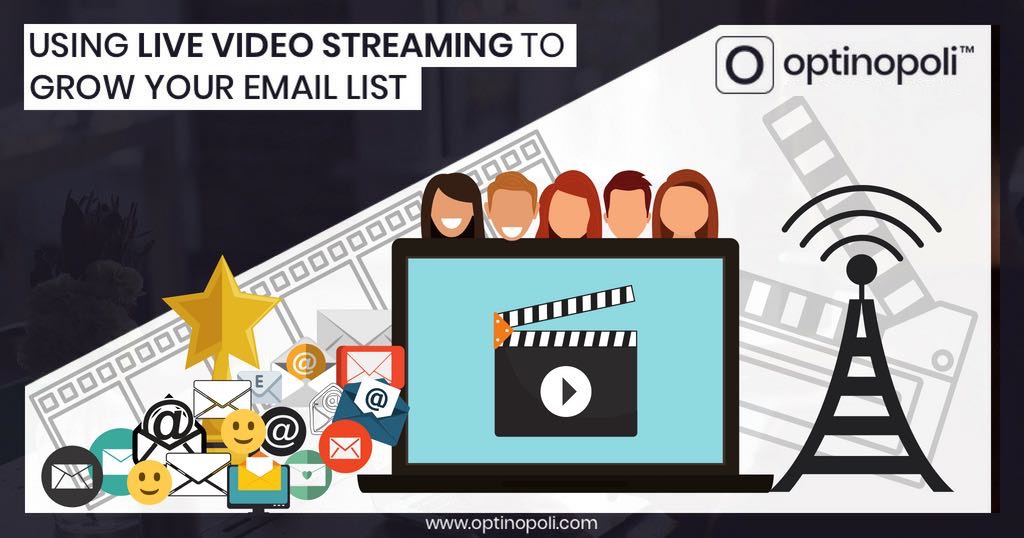
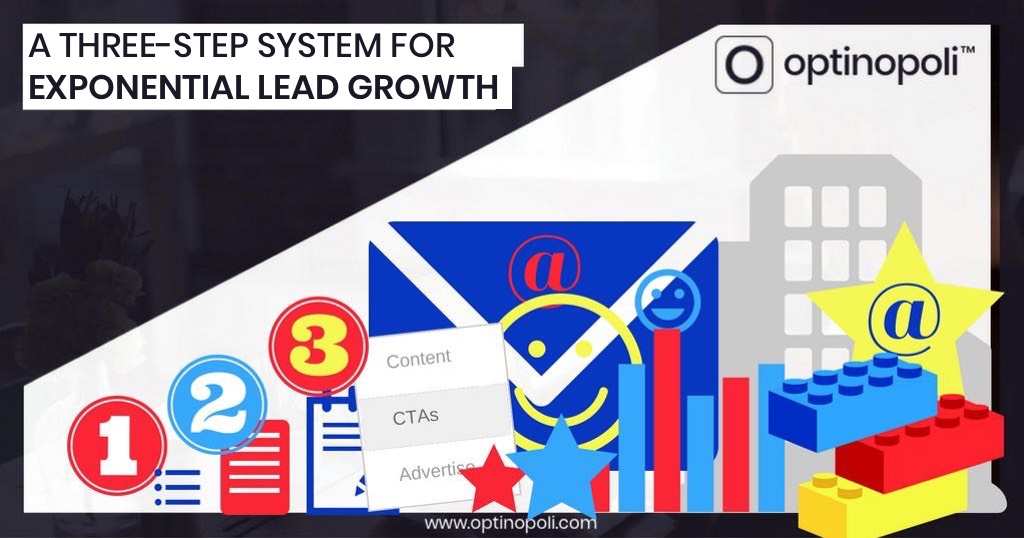

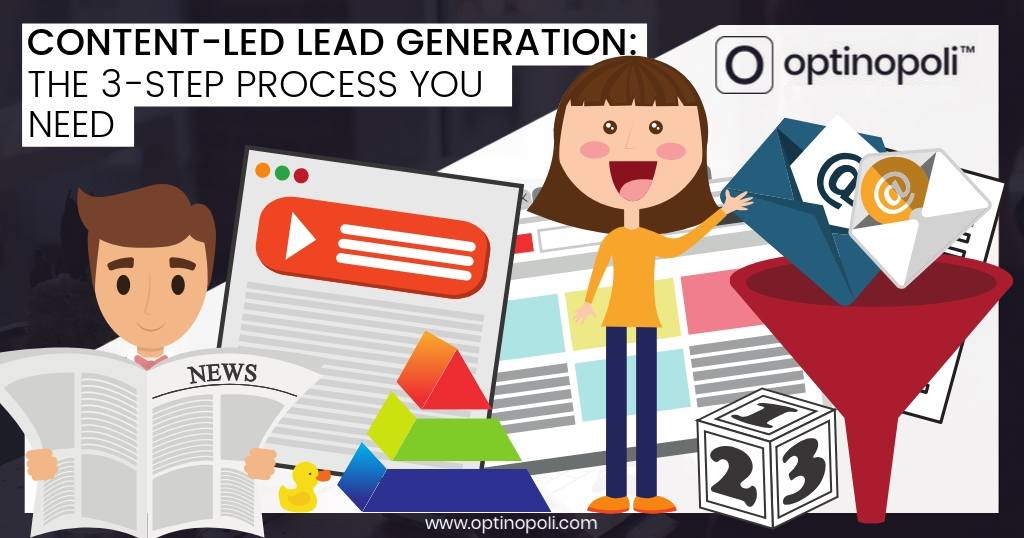
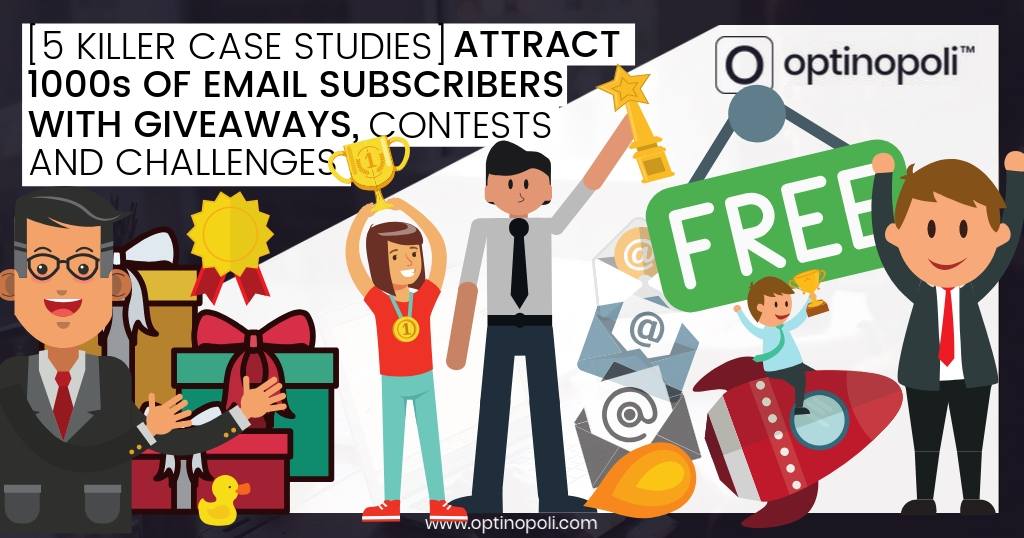
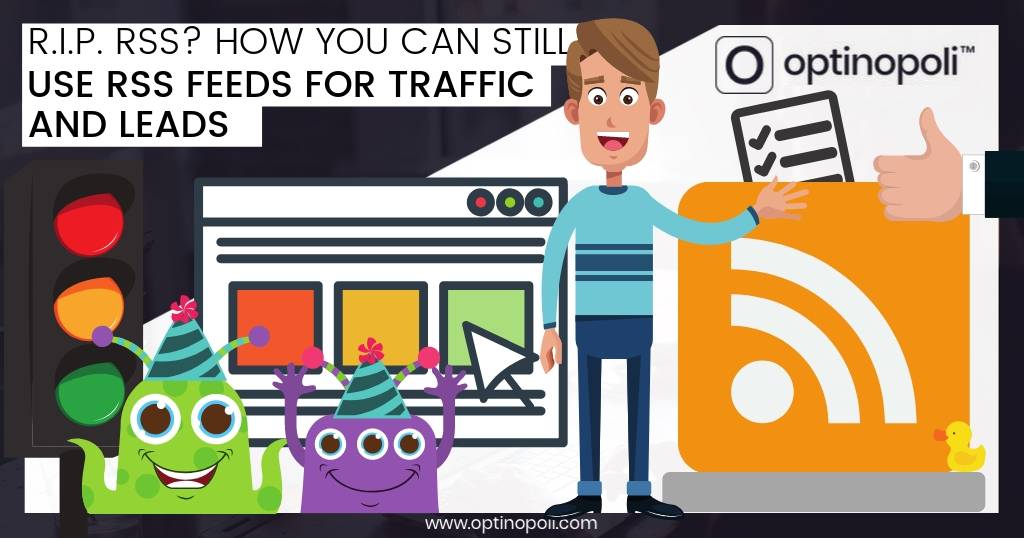
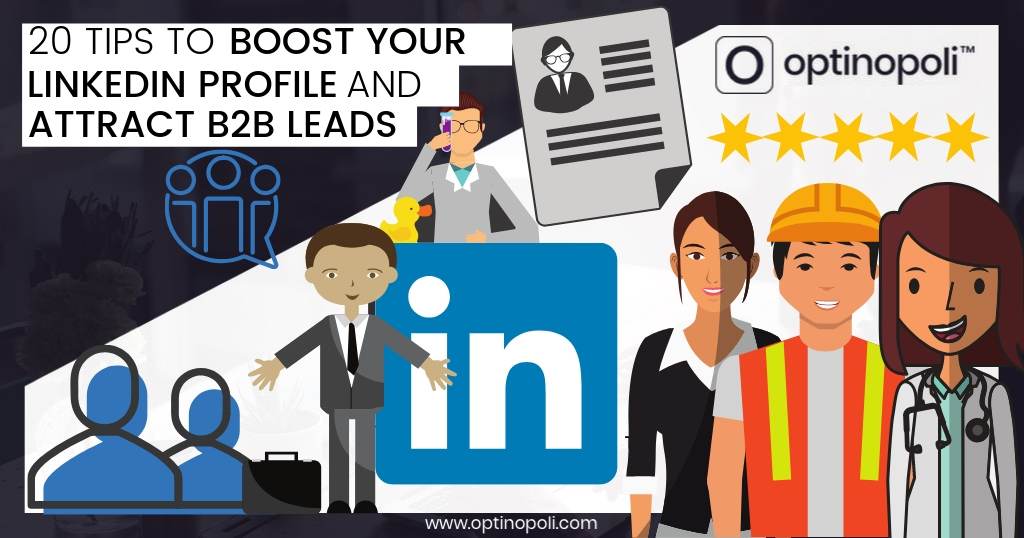
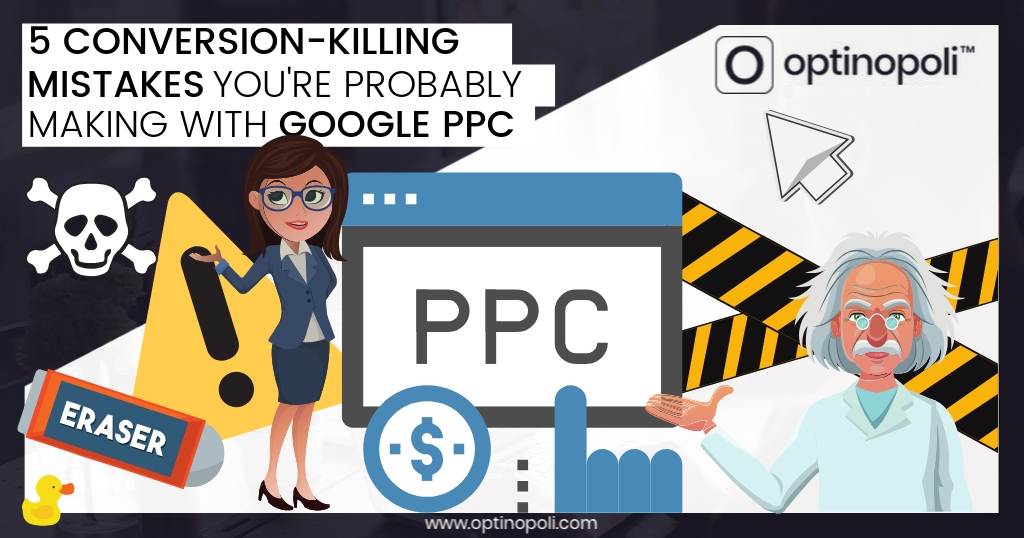
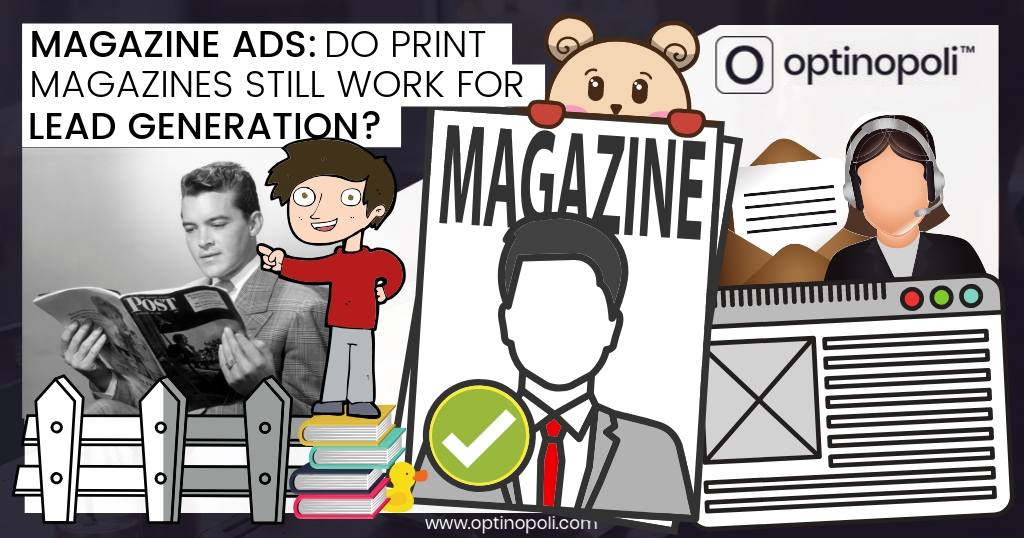
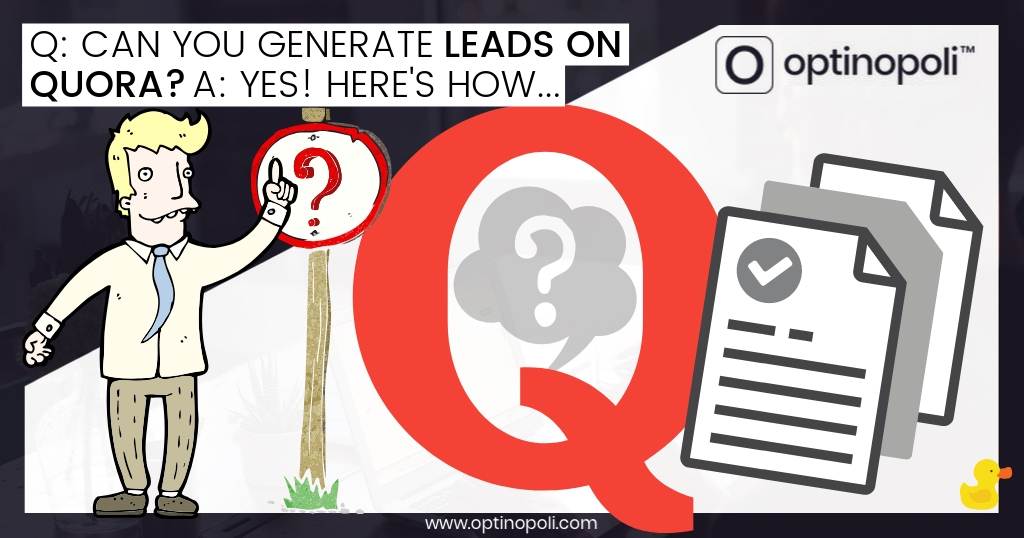
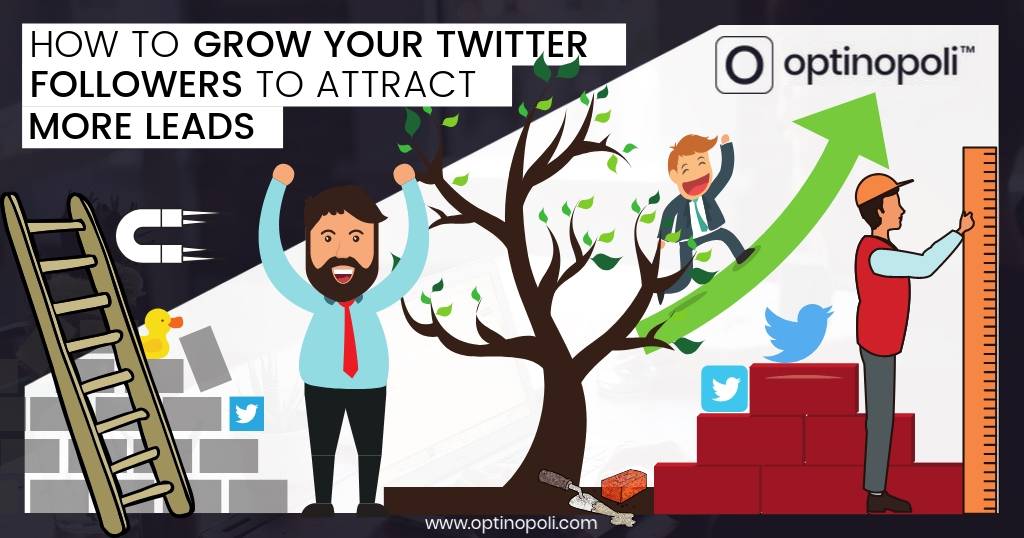
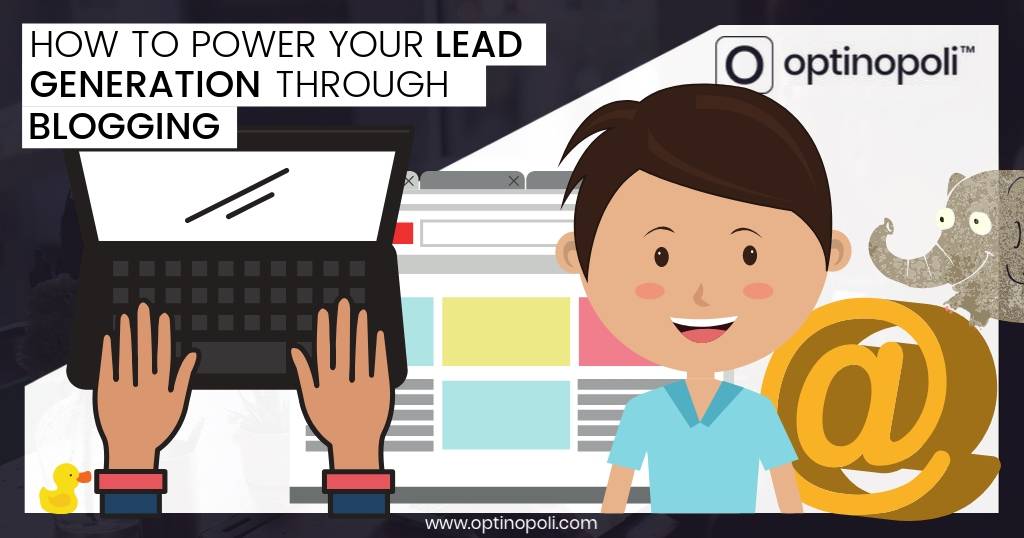
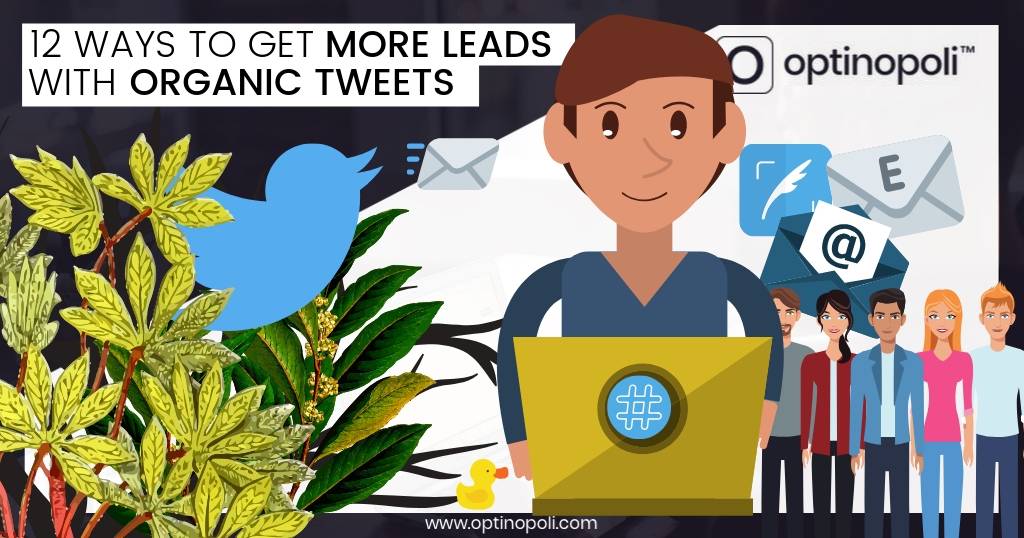
Comments